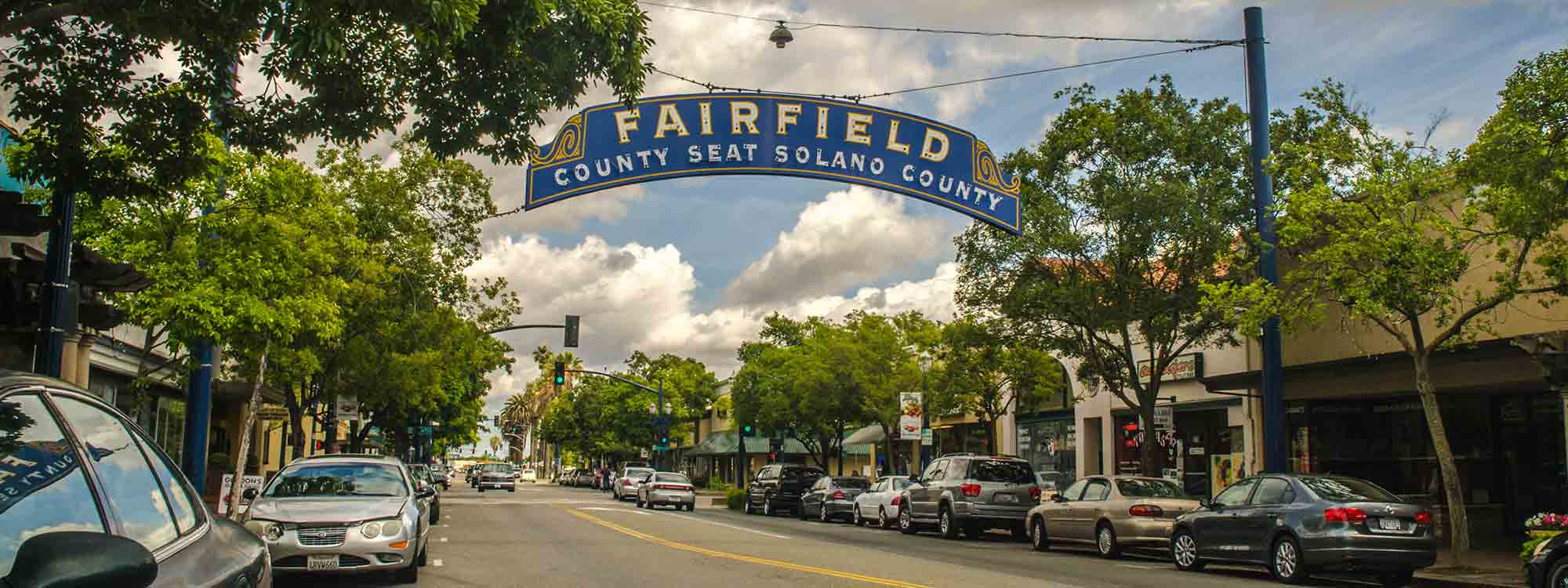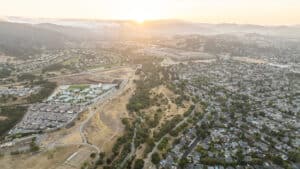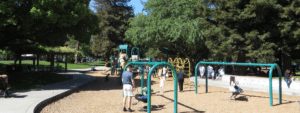The Heart of Fairfield Plan, approved by the Fairfield City Council this past May, is an extensive plan to make Fairfield’s central West Texas Street and downtown more vibrant. As the Solano County Regional Representative for Greenbelt Alliance, I spoke in support of the plan at a springtime City Council meeting.
Based on an impressive amount of research and significant outreach to the community, the Council-adopted plan identifies concrete ways to attract more visitors, private business owners, and infill oriented developers to the city’s most bustling sites. With measures already being implemented, the plan aims to turn Fairfield’s downtown into an economic hotspot and to encourage a more walkable downtown area. To learn more about the motivations behind the plan, the current stage of its implementation, and the community’s involvement in its creation, I interviewed Brian Miller from the Fairfield Planning Department. Here’s our Q&A:
What was the motivation behind the Heart of Fairfield Plan?
This was an opportunity to draw upon regional grant funding through Solano Transportation Authority (STA) to do a comprehensive specific plan for Fairfield’s West Texas Street and downtown. The City is always recognizing the importance of these areas, and the funding allowed us to retain a consulting firm to work with us to do the public process and prepare the plan.
What stage is the plan currently in?
The plan was prepared and adopted by the City Council in early May. The City is currently putting together an implementation program, which is going to start up in September, with a variety of actually committed funds to do certain programs and activities, such as a facade improvement program for downtown (involving more public art and lighting installations). We’re also bringing in a new zoning ordinance, which will help implement the Heart of Fairfield Plan. We’re also trying to initiate a neighborhood outreach program to improve communication between social services and residents in the neighborhood.
In what ways has the community been involved?
There was a series of public workshops, one of which had 100 attendees. We also held a public open house and some joint workshops between the City Council and Planning Commission that were open to the public. The Fairfield Main Street Association had a movie night with a film advocating for downtown renewal and revitalization. We’ve also submitted newspaper op-eds and other public outreach efforts.
What has been the community’s response to the plan?
We’ve had some enthusiastic community members. Some people have concerns about aspects of downtown, but there has also been excitement about the possibilities for getting a livelier and more attractive city center along West Texas Street.
What kind of housing development does the plan support? Does it address or encourage affordable housing?
One of the goals of the plan is to get more infill housing downtown, and the new zoning rules will definitely encourage that. There are certain policies and language concerning affordable housing. However, the general policy is that we already have a lot of affordable housing downtown, and what we’re really looking to develop is market rate housing at the in-fill sites and under-utilized properties.
Are other cities in Solano County taking a similar approach to developing their downtowns?
Vacaville has a plan for the area east of downtown proper, and Vallejo has done a lot of planning and investment in its downtown, as has Benicia. I think all of the cities in Solano County recognize the importance of having a strong core to the community. We chose to do it through a specific plan, as did Suisun City, but all the cities recognize this as an important issue.
How does the Heart of Fairfield Plan create a vision and inspire residents to want a more vibrant and walkable city center?
Our goal is to provide in-fill housing as an alternative. Fairfield is still a suburban city and will continue to see suburban development to a certain extent. What we have not been good at offering is the small town urban option for living, and that is what we are hoping the plan will encourage. The city will do what they can, but it will also take some property owners and business people who are interested in committing to the central downtown and doing something unique.
It’s all about providing attractive opportunities. I think providing improvements (lighting, signage, landscaping, etc.) will encourage private partners to do new projects. If you can provide unique housing that isn’t standard suburban housing that will attract people, then that will lead to further development and interest in that area. There is already interest in central city housing—it’s just about building on that interest and expanding the opportunities for people to choose that kind of lifestyle. A lot of people want the large home on a cul-de-sac and everything, but the idea is that that shouldn’t be the only thing Fairfield offers.
Does the plan address potential environmental impacts from development?
There was an environmental impact report prepared for the document. The environmental impacts were relatively minor because it’s an incremental plan and is not going to do things like wipe out whole streets of existing development and rebuild. Given that it’s an in-fill development oriented plan, the environmental impacts of new housing of that kind are relatively minimal because you’re already in a developed urban land. You’re not replacing wildland or building on farmland.
Learn more about the extensive Heart of Fairfield Plan here.
Photo: Wayne Hsieh via Flickr






